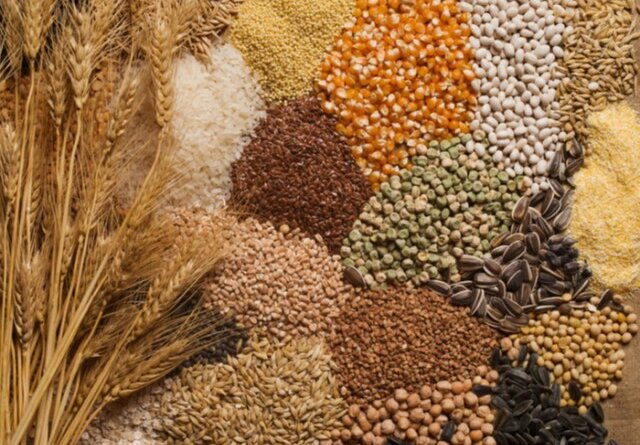Different Kinds of Grains Your Dog Can Eat
There are different kinds of grains to choose from for your dog to eat.
Pet owners want to feed their dogs with the best diet to supply their dog’s nutritional needs.
As you go through this article, you’re going to learn about the different kinds of grains and if they are suitable to feed to your dog.
What Is a Grain?
Whole grains remain in their natural state with only the outer haul removed.
It provides carbohydrates, which dogs convert to fuel for different activities. Starch from carbohydrates allows your dog to feel full after eating a meal.
Consumption of grains keeps your dog’s teeth clean by lessening the tartar buildup. For practicality, carbohydrates in dry dog food allow the food to remain fresh for a more extended time and make it palatable.
Can Dogs Eat Grains?
Yes, dogs can eat grains. Their diets may consist of various vegetables, fruits, nuts, seeds, grain, and mostly meat.
Grains provide carbohydrates, antioxidants, fats, and healthy nutrients that are an excellent addition to a dog’s meal.
Are Grains Digestible for Dogs?
Many myths have been going around on how grains are unhealthy because they are indigestible for dogs.
Debunking this myth, dogs can easily digest a high starch diet, including grains. Dogs can digest up to 95% of starch.
Can Grains Cause Dog Allergies?
There are talks around the neighborhood that grains cause dog allergies, but if you noticed, meats are most likely to cause allergies to your dog than grains.
Only a tiny portion of the dog’s population is allergic to grains, specifically wheat gluten.
RELATED ARTICLE: How to Feed Dogs with Food Allergies
Do Grains Have Nutrients?
Grains contain nutrients that are beneficial for your dog. These nutrients include vitamin E, folic acid, and fiber.
The fiber in grains can be a good food source for good bacteria in your dog’s digestive tract. It also helps regulate blood sugar.
Grains have lower calorie content than meat, thus, helping dogs lose weight.
If you feed your dog with grains, these nutrients are the reasons why your dog can have healthy skin and a functional immune system.
Are Grain-Free Diets Better?
No scientific study can support that grain-free diets are better than grain meals.
A grain-free diet is only advisable for dogs with allergic reactions to grains. This diet is as per the doctor’s recommendation.
Different Kinds of Grains for Your Dog to Eat
Dogs and Brown Rice
Rice is a grain rich in vitamins and minerals. Brown rice is a whole grain that still has an outer layer, unlike white rice.
The brown covering mainly contains fiber and nutrients. Aside from fiber and carbohydrates, brown rice is also rich in vitamin B.
Vitamin B plays an essential role in energy metabolism and enzyme function. It also has natural magnesium, selenium, phosphorus, and vitamin E source.
Dogs with an upset digestive system may benefit from eating brown or white rice. However, white rice is most advisable to feed as it relieves your dog’s aching stomach.
Whole Wheat and Your Dog
Wheat is a common ingredient in dry dog food formula. It contains gluten, making most dogs allergic to wheat.
But for puppies, wheat can be an essential addition to their balanced diet.
Most dogs can safely eat and digest whole wheat as this is an excellent source of carbohydrates that gives energy to them.
Wheat is also a good source of protein in meat-based formulas. It contains wheat bran rich in fiber which acts as a prebiotic that nourishes good bacteria in your dog’s digestive system.
Feeding Dogs Barley
Barley is one of the common cereal grains that is also a good source of carbohydrates in dog food.
Although associated with brewing beer, barley is a popular alternative to corn and wheat.
Barley has high energy content compared to other grains. It’s an ideal component for active dogs that needs high carbohydrate level.
Like brown rice, barley is also rich in vitamin B.
Non-hulled barley mostly appears on pet food labels as barley groats, an excellent fiber source for dogs. Barley groats are the preferable form of barley.
Millet for Dogs
Millet is a tiny seed used in wild bird food. This grain is an omnivore-appropriate dog food ingredient.
Millet is a gluten-free grain similar to the grains that the ancestor dogs consumed when eating a prey animal’s stomach.
Since millet is gluten-free, it’s a popular choice for gluten-sensitive dogs who prefers grain-inclusive diets. It also has high antioxidants that boost the dog’s immune system and high-fat content.
Rye Can Be Great for Dog Weightloss
Rye contains gluten, which is not suitable for dogs with gluten sensitivity, celiac disease, or grain intolerance. But some dog food companies prefer rye as a source of carbohydrates in weight control formulas.
Rye has a similar nutritional profile to barley. It also contains vitamin B and fiber.
Some studies demonstrate that rye can help with weight loss, blood sugar control, and heart health despite having high energy levels.
Rye has high fiber content than wheat when left unprocessed. Usually, dogs do not use fiber as a primary energy source, but a high fiber content help dogs prevent overeating.
Oats
Both for humans and dogs, oats are nutritious grains to take. Oats have high protein and low gluten levels.
Oats are famous for dog formulas with corn, wheat, and other grains sensitivities.
Although dogs digest animal protein more efficiently than plant protein, oats help boost meat-based protein diet content.
With oats having a low glycemic index, it helps lower blood sugar. At the same time, the soluble fiber manages cholesterol.
Pet owners fond of a non-GMO diet prefer oats to any grains.
Quinoa In a Dogs Diet
Quinoa is safe for dogs in moderate amounts. Almost all of the premium grain-inclusive dog food formulas contain this seed.
Quinoa is a healthier alternative to corn and wheat. It contains calcium that plays a critical role in bone development.
Sorghum Superfood for Dogs
Sorghum is an ancient grain often referred to as a “superfood” in pet formulas. It is gluten-free and has a higher nutritional value than most traditional grains.
This cereal grass has a low glycemic index, so that that sorghum may be beneficial in grain-inclusive diets for pets with diabetes. Its essential fatty acids also have antioxidant effects on the dog’s body.
Sorghum’s high mineral content provides excellent dietary phosphorus, copper, magnesium, and zinc.
Corn in Your Dogs Food
Corn is a safe dietary ingredient for most dogs that can digest most carbohydrates and nutrients.
This affordable and abundant grain contains vitamin E and beta-carotene. It also has essential fatty acids that support the dog’s coat health.
What Grain Products to Avoid or Limit?
High-quality grains are the best to feed dogs, but dogs with allergies to grains will exhibit adverse reactions after taking them.
Most common grain allergies include wheat and corn. You may choose to avoid giving these if your dog shows allergic reactions to them.
Low-quality cereal grains and by-products may be safe for pets, but choosing high-quality grains with substantial health benefits can create a more optimal diet for your dog.
Try limiting the following when buying new grain-inclusive dog food:
- Wheat Gluten
- Corn Gluten Meal
- Wheat Middlings
- Cereal Fines
- Grain Hulls
These grain products are put in dry dog foods for affordability and convenience, not because of their nutritional value.
Selecting a dog food that uses whole-grain ingredients instead of by-products will ensure that your dog’s health is more important than profit.
Why Choose Grains for Your Dog?
Dogs can make glucose for energy out of fat and protein from the diet, but this does not mean that grains are no longer needed.
Here are some of the reasons why choosing grains for your dog can be the best option:
- Fiber can regulate the digestive system, can serve as food for the good bacteria in the guts, and eliminate toxins in the body.
- Soluble fiber found in oats helps stabilize blood glucose levels, control cholesterol, and enhance the absorption of nutrients.
- It provides high amounts of vitamins and minerals.
- Grains reduce a diet’s calorie intake while giving satiating fiber.
- Energy from carbohydrates in grains benefits dogs with kidney or liver diseases that require a protein-reduced diet or dogs with pancreatitis and intestinal conditions that need a low-fat diet.
Essential Things to Do to Get the Most Out of Grains
One way to help reduce anti-nutrients in grains is by soaking them in water before cooking them.
- Soak it for at least 12 hours before cooking to reduce phytic acid that binds certain minerals and reduce their functionality.
- Cook well to increase digestibility.
- Select the grain that would cater to your dog’s needs. Dogs with GI conditions digest white rice better than brown rice, while dogs with kidney disease should avoid brown rice because of its high phosphorus level.
- Avoid corn, wheat, and all gluten-containing grains.
- Never feed genetically modified (GMO) grains.
- Choose more nutritious pseudo-grains like buckwheat and quinoa.
- Avoid dog foods that rely on grains as a substitution for animal protein.
- Your dog’s individual needs will determine how much grain to include in their meal diet.
Different Kinds of Grains For Dogs Bottom Line
Grains are safe for dogs, except for ones that have grain allergies.
It is an excellent source of nutrients that are beneficial for dogs, which means that the chance of your dog having a grain allergy is small.
When choosing food for your pet, whole grains are worth choosing as a source of nutrition.
If you want to give it a try to your dog, gradually introduce it in small portions and observe any reactions after.
RELATED ARTICLE: Homemade Puppy Food Recipes
The post Different Kinds of Grains Your Dog Can Eat appeared first on Top Dog Tips.
















